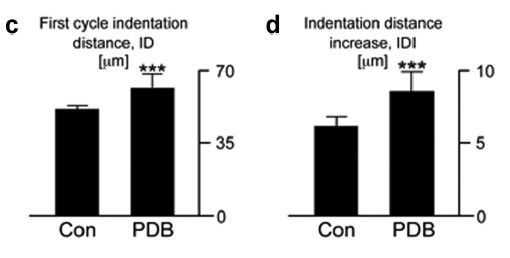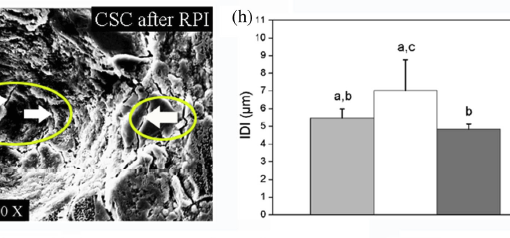Abstract
Fractures, particularly at the lower extremities and hip, are a complication of diabetes. In both type 1 (T1D) and type 2 diabetes (T2D), fracture risk is disproportionately worse than that predicted from the measurement of bone mineral density. Although an explanation for this discrepancy is the presence of organic matrix abnormalities, it has not been fully elucidated how advanced glycation endproducts (AGEs) relate to bone deterioration at both the macroscopic and microscopic levels. We hypothesized that there would be a relationship between skeletal AGE levels (determined by Raman microspectroscopy at specific anatomical locations) and bone macroscopic and microscopic properties, as demonstrated by the biomechanical measures of crack growth and microindentation respectively. We found that in OVE26 mice, a transgenic model of severe early onset T1D, AGEs were increased by Raman (carboxymethyl-lysine [CML] wildtype (WT): 0.0143 ±0.0005 vs T1D: 0.0175 ±0.0002, p = 0.003) at the periosteal surface. These differences were associated with less tough bone in T1D by fracture mechanics (propagation toughness WT: 4.73 ± 0.32 vs T1D: 3.39 ± 0.24 NM/m1/2, p = 0.010) and by reference point indentation (indentation distance increase WT: 6.85 ± 0.44 vs T1D: 9.04 ± 0.77 μm; p = 0.043). Within T1D, higher AGEs by Raman correlated inversely with macroscopic bone toughness. These data add to the existing body of knowledge regarding AGEs and the relationship between skeletal AGEs with biomechanical indices.
https://www.ncbi.nlm.nih.gov/pubmed/27140650
PLoS One. 2016 May 3;11(5):e0154700. doi: 10.1371/journal.pone.0154700. eCollection 2016.




